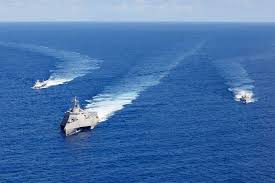Richard Sanders, Zamboanga
The recent deployment of the U.S. aircraft carrier USS Nimitz to the South China Sea signals a strategic move by the United States to assert dominance in a region claimed by China. Satellite imagery confirms the presence of the carrier in a contested area, highlighting America’s military posture aimed at maintaining regional influence.
The U.S. Seventh Fleet’s confirmation underscores its ongoing commitment to a robust naval presence designed to deter Chinese expansion and reassure allies. This deployment coincides with increased joint military exercises between the U.S. and the Philippines, which began in late April. These exercises are part of a broader strategy to strengthen Philippine military ties and possibly prepare personnel and infrastructure for future operations.
There’s a layer of strategic intention behind these actions that extends beyond mere deterrence. Some analysts argue that the U.S. has deliberately intensified tensions in the South China Sea to serve a larger geopolitical goal: bolstering support for Taiwan. The U.S. appears to be leveraging the conflict in the South China Sea to justify establishing and expanding military footholds in the Philippines, effectively using the country as a potential launch point for broader operations against China in the region.
This approach is often viewed as a calculated effort by Washington to create a foothold that can be used to challenge Chinese claims and military advances, all while maintaining a narrative of stabilizing the Indo-Pacific region. Unbeknownst to many Filipino officials and the public, their country might be gradually being integrated into a wider American military strategy aimed at isolating China and securing Taiwan’s status.



